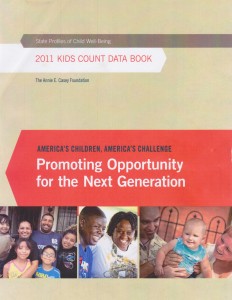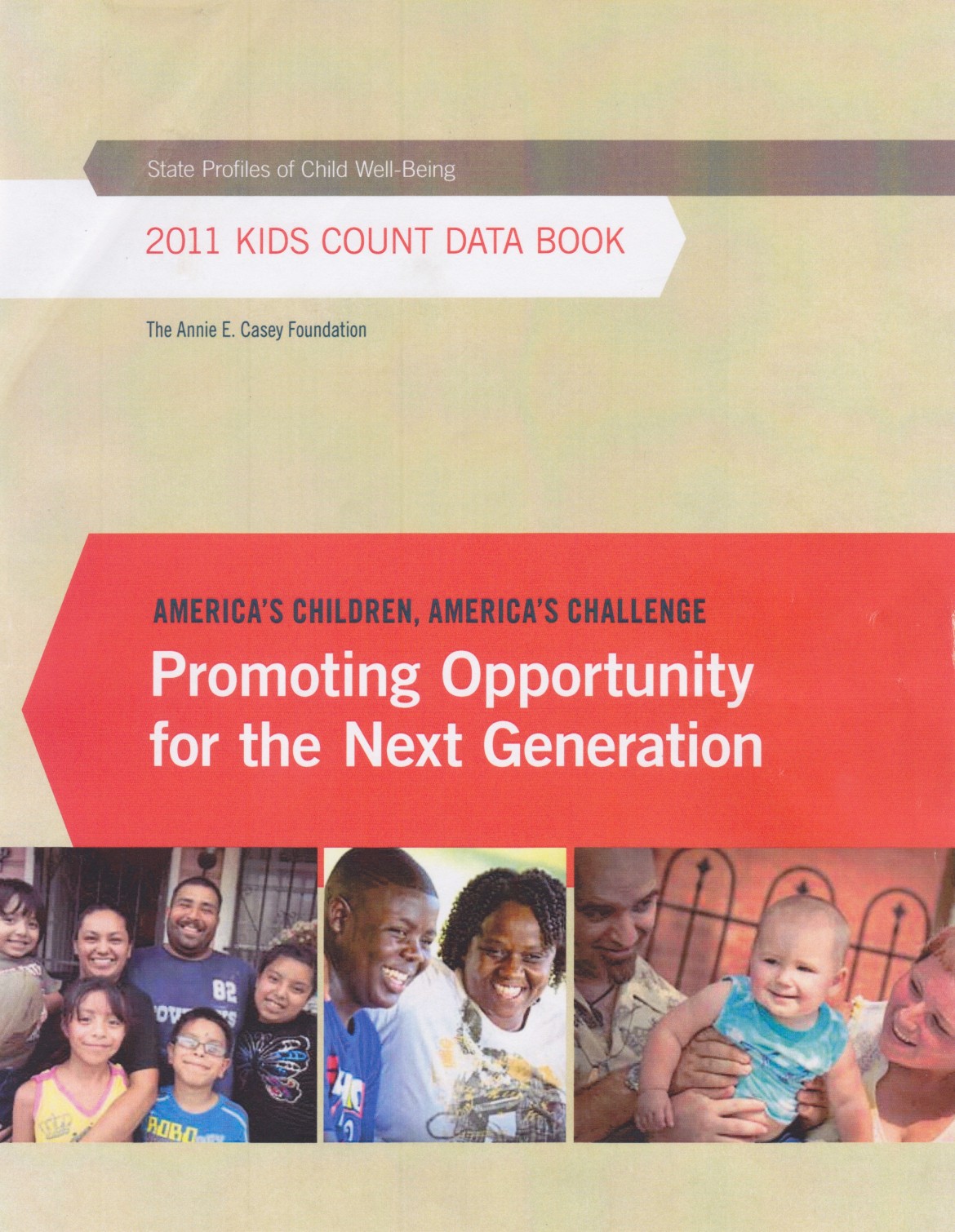
There has been a significant decline in economic well being for low-income children and families in the last decade, according to the Annie E. Casey Foundation’s annual KIDS COUNT Data Book.
Among the findings, the official child poverty rate, a conservative measure of economic hardship according to the report, increased 18 percent between 2000 and 2009. The increase represents 2.4 million more children now living below the federal poverty line, returning to roughly the same levels as the early 1990’s.
“In 2009, 42 percent of our nation’s children, or 31 million, lived in families with incomes below twice the federal poverty line or $43,512/year for a family of four, a minimum needed for most families to make ends meet,” Laura Speer, associate director for Policy Reform and Data at the Casey Foundation, said in a press release. “The recent recession has wiped out many of the economic gains for children that occurred in the late 1990’s.”
In the past two decades, since the Casey Foundation started the KIDS COUNT report, significant gains have been recorded in the overall health and safety of children.
Since 2000, five of the ten key indicators of child well being examined by the Foundation improved, three areas worsened and two were not comparable to earlier data, but show a negative trend since 2007, the earliest year comparable data is available.
Areas that showed improvement since 2000:
• Infant mortality rate (-1 percent)
• Child death rate (-14 percent)
• Teen death rate (-7 percent)
• Teen birth rate (-15 percent)
• Teens not in school and not high school graduates (-45 percent)
Areas that worsened since 2000:
• Babies born with low birthweight (+8 percent)
• Child poverty rate (+18 percent)
• Children living in single-parent families (+10 percent)
Areas not comparable to 2000:
• Percentage of teens not in school and not working
• Percentage of children living in families where no parent has full-time, year-round employment
The 2011 report also includes two additional indicators: parental unemployment and foreclosure. Last year, 11 percent of children had at least one unemployed parent and 4 percent have been affected by foreclosure since 2007.
Within each indicator, however, individual state performances vary widely.
Nationally, the number of children living in a single-parent household increased by 10 percent since 2000. Only Utah, Oregon and the District of Columbia showed a decrease, while 45 states reported an increase.
Texas, with single-family households at roughly the national average of 34 percent, witnessed a similar trend with a 7 percent increase.
“I don’t think these findings are surprising,” said Mark Levin, director of Right on Crime, a Texas-based think tank that deals in part with juvenile issues, adding that only about 20 percent of incarcerated youth in the state have a father in the household. “The role of government isn’t to force people to get married or stay married, but in our public schools we can look at filling the gap and try to provide the support and guidance they’re [children] not getting at home.”
Mississippi showed improvements in infant mortality and low birth weights, but has consistently ranked 50th throughout the past decade in overall performance. In 2011, Mississippi, Louisiana and Alabama ranked the lowest in the nation overall.
“[Alabama] has always had a higher poverty rate than the rest of the nation,” said Linda Tilley, executive director of Voices for Alabama’s Children. “We see so many children already behind when they enter kindergarten and the gaps don’t narrow, they widen. Education and particularly early care and education are the key to breaking the generational cycle of poverty.”
“Every child can succeed given the right education and support,” Levin added. “It’s important to note many youths from single family houses go on to be successful."
The complete report, mapping tools, and other resources are available on the Annie E. Casey Foundation’s website.

i have a 15 yr old who is the youngest out of 6 kids. 5 boys 1 girl. the 4 older boys sre involved with gangs and all that comes with it. my 15 yr old looks up to his older bros and thinks that this is all fun and games . i try telling my 15 yr old that he dont get the late nite calls on how there in a messed up problem or hungry or how there friends turn on them or in prison or dead. they have this big thing about dropouts. none of them been to prison but play this s*** especially in the neighborhood i come from. anyways my 15 yr old just like my other kids is awesome in football but this year quit the team cuz he says hes noone b****. he has run away and been gone for 7 weeks. probation and cps say theres no laws for running away and they cant do nothing cus hes not on probation. he cuss out the teachers, the principal and gets suspened from school.he is very disrespectful to me (im his mother) and grandmother he dont get stupid with his dad but will have attidude. fighting, bad attidude, suspinision, just not caring and no respect for anything or anyone. we have tried everything. he has a big heart and worked his first job and was so happy and responible. i miss my baby and he we need help he has an anger problem. i think theres so many laws for kids and thats why there the way they are as parents are hands are tied. please help us help him.
Hi All:
To learn why there is more poverty for kids, see the underlying cause via this PBS News Hour video: Land of the Free, Home of the Poor. http://www.pbs.org/newshour/bb/business/july-dec11/makingsense_08-16.html
Is this what you want for America?